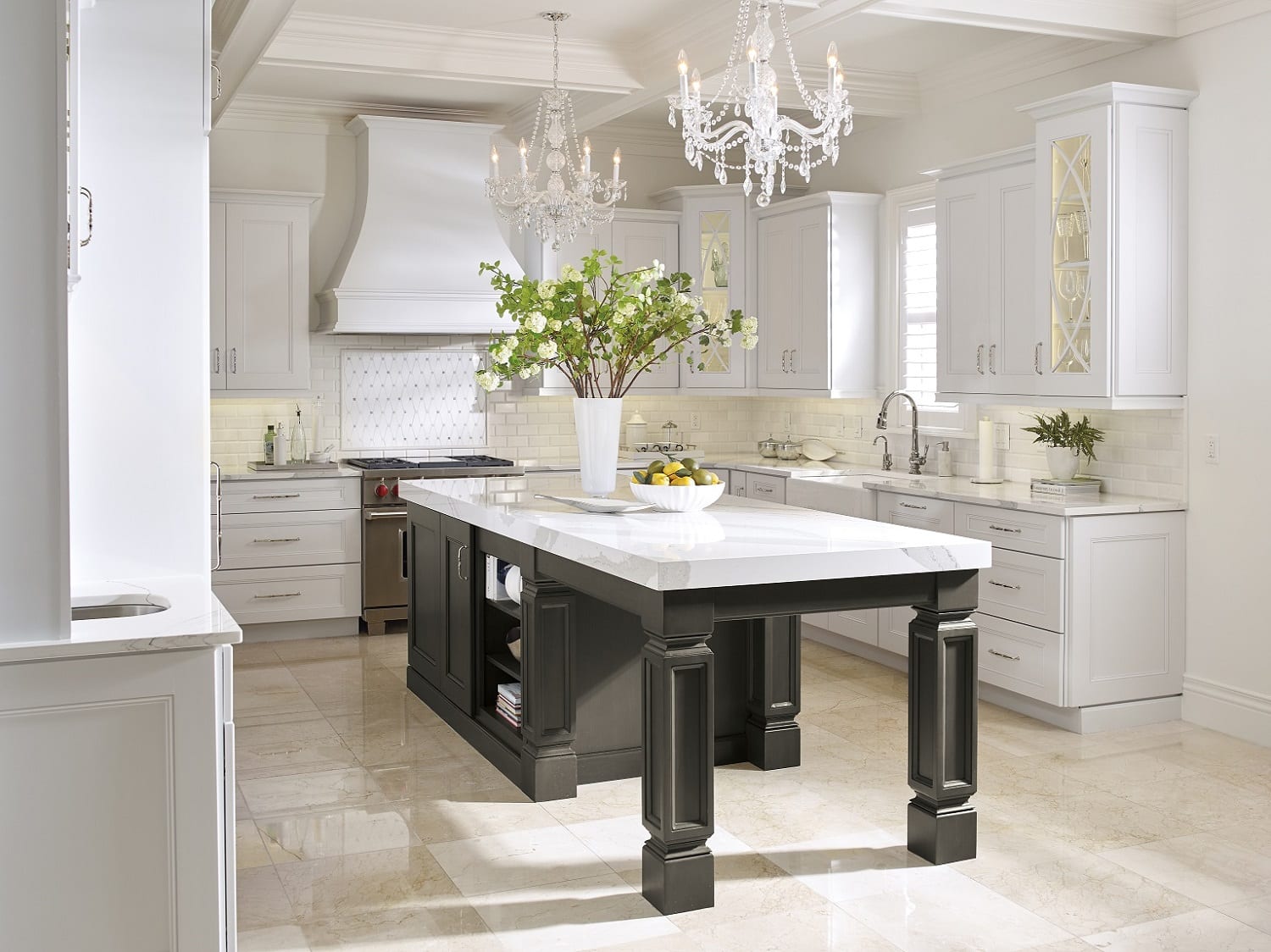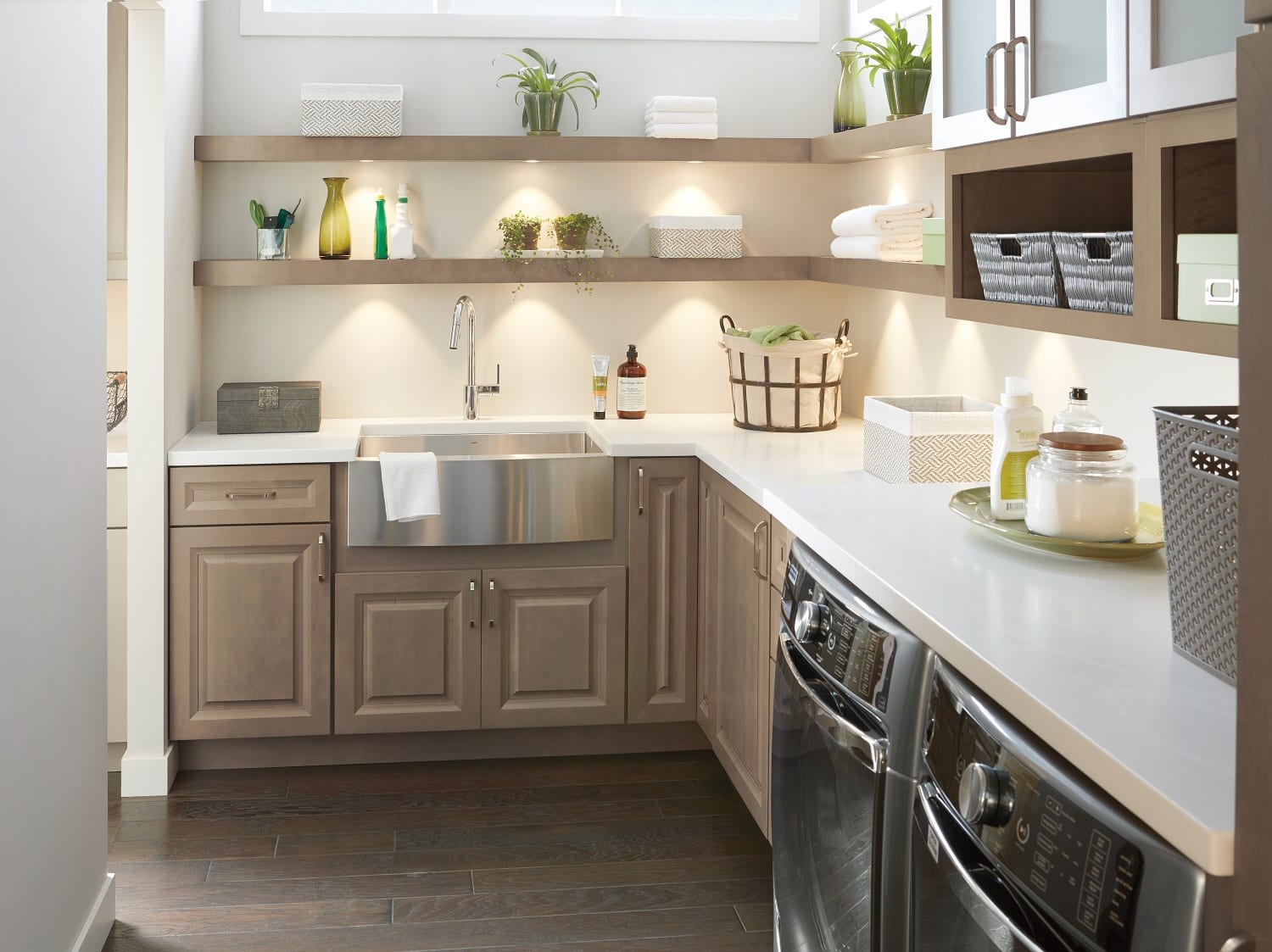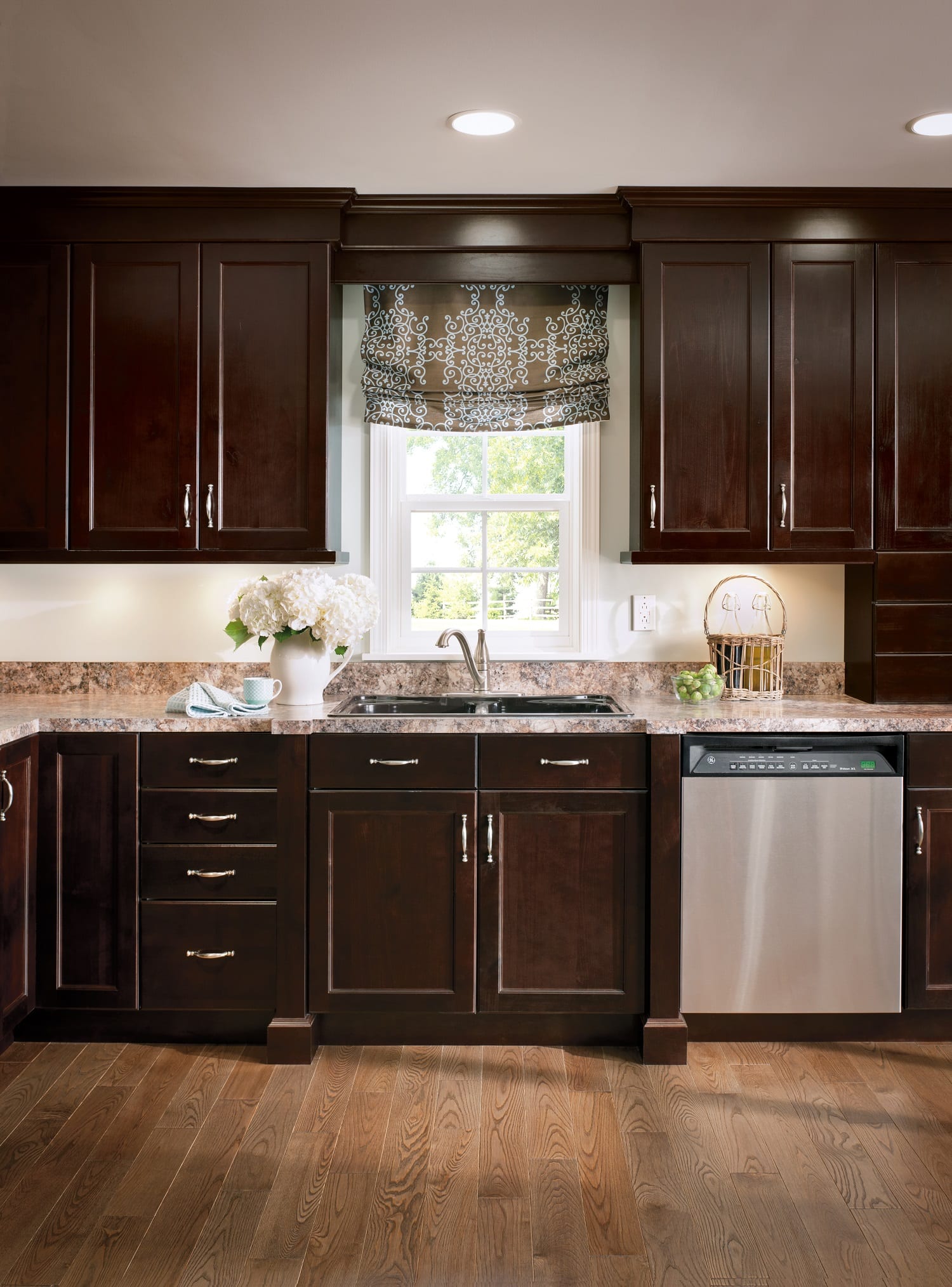The type of countertop you choose is one of the most important decisions you can make in a kitchen design or remodel.
Countertops are usually the first thing people see when they enter a kitchen. They need to last a long time, clean easily, and look great with all of the other décor in the room. It’s easy to see why choosing the right countertop is critical to the success of every kitchen project.
The most popular countertop materials used in kitchens today are quartz, granite, and marble – in that order. Quartz has become the most popular choice and continues to grow in appeal. While there are many similarities among the three, each has its pluses and minuses, depending on personal taste, usage, and the overall look you want to achieve. Making the right decision among the different countertop materials can be challenging for many homeowners.
Since countertops are one of our specialties, Chris & Dick’s has a long history of providing customers with expert advice on which kitchen countertop materials will work best in their home. To help you in your decision-making process, we have assembled the main factors that distinguish granite, marble, and quartz countertops.

1. Appearance
Both granite and marble are made of natural stone, which gives each of them unique colorations and markings. The differences in appearance between the two have to do with the way the stone was formed, and the minerals involved.
Quartz is a man-made product using primarily powdered quartz mineral and adding resins, polymers, and dyes to create different colors and styles. Quartz countertops are a big trend in today’s market. With several brands, each of which offers its own set of colors and styles, you can get contemporary solid colors or a variety of colors that are patterned to look like natural stone.
In granite, the slab can feature a range of hues, including greens, blues, reds, pinks, and other colors that can change the overarching color pattern of a countertop. These hues range from light to medium or dark tones.
Though marble is available in a wide range of colors, the classic white marble remains the top choice for most homeowners. It is tough to find anything whiter in nature than white marble. In fact, white countertops and grey countertops are trending the most right now, especially in the veined marble look.
A countertop’s appearance may be the most subjective difference that can influence a homeowner’s decision among quartz, granite, or marble. Let your own sense of style and what appeals to you guide the way.
2. Durability
Because quartz countertop material is powdered quartz mixed with polymers, resins, and dyes and then formed into slabs, engineered quartz stone does not need to be sealed, as does porous granite or marble. It resists scratches but is not impervious to scratches. It cannot tolerate hot pots and pans as granite and marble do. And it is resistant to etching by such acidic liquids as citrus juice or wine.
Granite is a rock. This means it is made up of several minerals, including quartz, feldspar, and plagioclase. As an igneous rock, it was formed of the magma deep within the earth, making granite extremely hard and durable.
Marble is a metamorphic rock, meaning it was formed over millions of years from another rock. In the case of marble, the original rock was limestone. Marble is cool to the touch and much softer than granite. It can be etched and stained very easily unless it is sealed, and because of its coolness, marble is the ideal surface for making pastry.
Ultimately, homeowners can extend the durability and appearance of all countertop materials by maintaining them properly.

3. Maintenance
When compared to other common countertop materials such as solid surface, laminate, quartz, glass, or ceramic tile, both granite and marble require more maintenance.
Cleaning and sealing regularly are usually enough to keep both surfaces looking and performing their best, although marble requires more care in terms of wiping up spills immediately, avoiding contact with acidic items, and frequent sealing.
If you have your heart set on a marble countertop, be prepared to spend more time and effort maintaining it than you would quartz or granite.

4. Price
Generally speaking, granite countertops are going to start at a sightly lower price point than either marble or quartz. However, based on the color selection, there is a large variance in pricing for all three materials options.
Various other factors can impact the installation costs for your countertop, including the number of seams and corners where it is being installed and even the type of sink you have.
The choice among quartz, granite, or marble countertops should be made only after careful consideration of several factors. Taking into account the appearance, durability, maintenance, and price of each material is a must in order to achieve a kitchen countertop that will work for your home and meet your needs for years to come.

